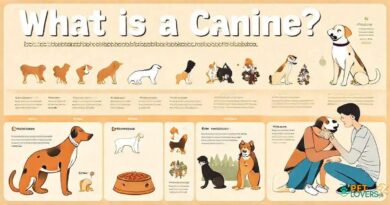What is Mating
What is Mating in Dogs?
Mating in dogs refers to the reproductive process where a male dog, known as a stud, and a female dog, known as a bitch, come together for the purpose of breeding. This natural behavior is driven by instinct and is crucial for the continuation of a dog’s lineage. Understanding the mating process is essential for dog owners, breeders, and enthusiasts who wish to ensure healthy breeding practices and the well-being of both the male and female dogs involved.
The Mating Cycle of Female Dogs
The female dog’s mating cycle, also known as the estrous cycle, typically occurs twice a year and consists of four stages: proestrus, estrus, diestrus, and anestrus. During proestrus, the female begins to attract males but is not yet receptive. Estrus is the stage where she is fertile and will accept a male for mating. Diestrus follows, where the female’s body prepares for pregnancy, and anestrus is the resting phase before the cycle begins again. Understanding these stages helps breeders time mating effectively.
Signs of Mating Readiness
Identifying when a female dog is ready to mate is crucial for successful breeding. Signs include behavioral changes such as increased affection, restlessness, and a swollen vulva. Additionally, a bloody discharge may be present during proestrus, while during estrus, the discharge often becomes lighter and more straw-colored. Observing these signs can help dog owners and breeders determine the optimal time for mating.
The Mating Process
The mating process itself involves several steps. Initially, the male dog will court the female through various behaviors, including sniffing and licking. Once the female is receptive, the male mounts her, and copulation occurs. This process can last anywhere from a few minutes to over half an hour, and it may take place multiple times over several days to increase the chances of successful fertilization.
Understanding Tie in Dog Mating
During mating, a phenomenon known as the “tie” may occur, where the male and female dogs become physically locked together. This happens when the male’s bulbus glandis swells inside the female, preventing them from separating immediately. The tie can last anywhere from 15 to 30 minutes, and it is a natural part of the mating process that helps ensure successful fertilization. Understanding this aspect can alleviate concerns for first-time breeders.
Post-Mating Care for Dogs
After mating, it is essential to provide proper care for both the male and female dogs. The female should be monitored for any signs of distress or complications, and her diet may need to be adjusted to support potential pregnancy. Regular veterinary check-ups are recommended to ensure both dogs remain healthy. Additionally, keeping the mating area clean and comfortable can help reduce stress for both animals.
Potential Risks and Considerations
While mating is a natural process, there are potential risks involved, including the transmission of diseases and complications during pregnancy. Responsible breeding practices, such as health screenings and genetic testing, are crucial to minimize these risks. Dog owners should also consider the implications of breeding, including the responsibilities of caring for puppies and finding suitable homes for them.
Ethical Breeding Practices
Ethical breeding practices are vital to ensure the health and well-being of both the parent dogs and their offspring. This includes selecting breeding pairs based on health, temperament, and breed standards. Responsible breeders also provide proper socialization and care for puppies, ensuring they are well-adjusted and healthy before they go to their new homes. Understanding what constitutes ethical breeding is essential for anyone involved in the dog breeding community.
Conclusion on Mating in Dogs
In summary, understanding what mating is in dogs encompasses various aspects, from the biological processes involved to the ethical considerations of breeding. By educating themselves about the mating cycle, signs of readiness, and responsible breeding practices, dog owners and breeders can contribute positively to the health and happiness of their dogs and future generations.



